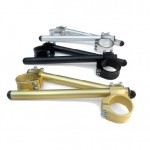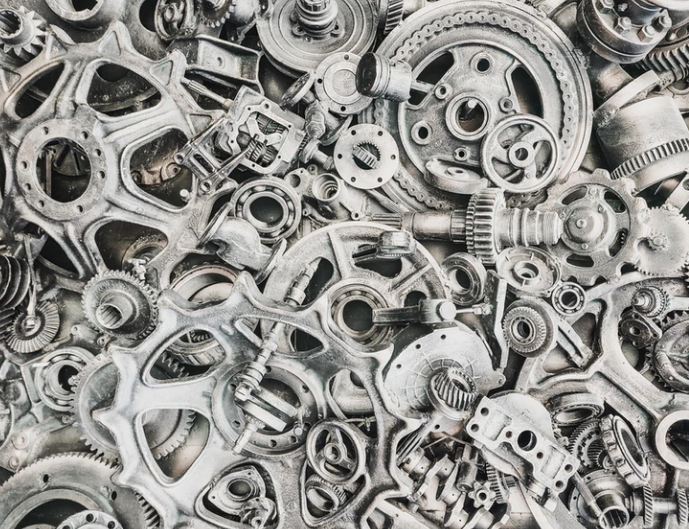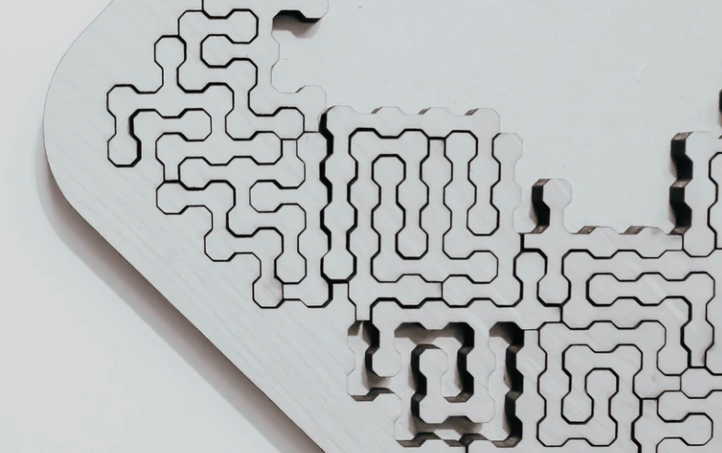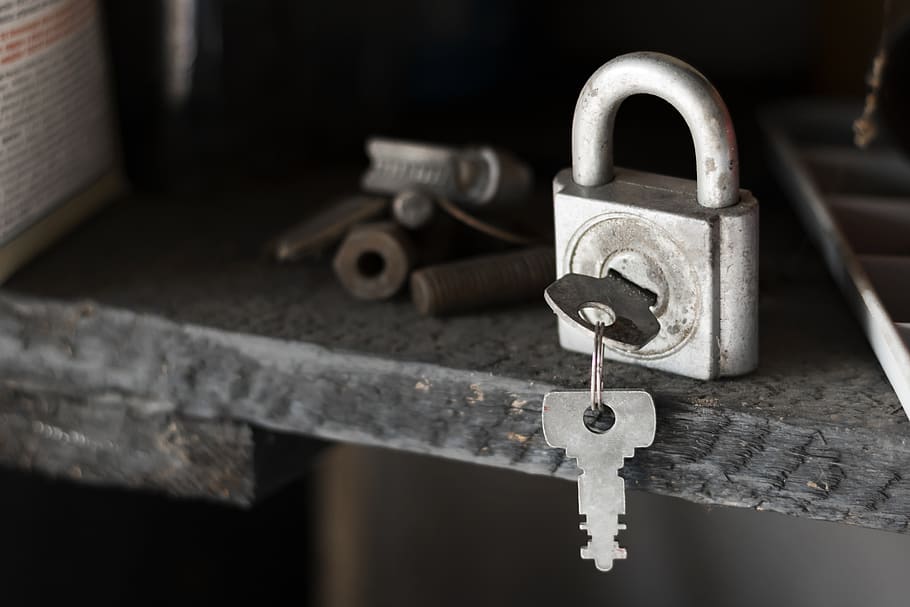Author Note: I wrote this article when I still owned my GSX650F. I’ve since traded-up for a 2007 GSXR600 (and I couldn’t be happier). I might have some images to post with this tutorial, but I’ll post them when/if I can find them. Hopefully the write-up is enough to help… Good luck, modders.
 Prior to my experiences with the Suzuki GSX650F, I was the semi-proud owner of a Hyosung GT250R. I loved the body styling, aggressive riding position, cheap price ($3300 OTD) and gas mileage, but I realized something more powerful was necessary for longer trips (and riding 2-up with the Mrs.). This brought me to my evolving 2008 GSX650F, which has the power, speed, and styling qualities that I was looking for, but still lacked the aggressive riding position I had with the Hyosung.
Prior to my experiences with the Suzuki GSX650F, I was the semi-proud owner of a Hyosung GT250R. I loved the body styling, aggressive riding position, cheap price ($3300 OTD) and gas mileage, but I realized something more powerful was necessary for longer trips (and riding 2-up with the Mrs.). This brought me to my evolving 2008 GSX650F, which has the power, speed, and styling qualities that I was looking for, but still lacked the aggressive riding position I had with the Hyosung.
Vortex Racing had the answer to my commuter bar problem: 41mm clip-ons. They’re available in three different colors: silver (aluminum), black, and gold. Additionally, Vortex manufactures after-market bar ends (weighted or unweighted) for their clip-ons — which are certainly necessary after losing the dampers. The install took less than 45 minutes, but I’ll admit I made the mistake of loosening one of the fork bolts too much while lowering the front-end (required for installation on the GSX650F). This inevitably resulted in a lopsided front after the left fork pushed right through the triple-tree clamp. An extra 10 minutes of jacking the bike up and re-adjustment was required. Here’s a concise set of steps used to complete the project:
Materials:
- (1) Pair of Vortex 41mm Clip-on handle bars (clamps and bars)
- (1) Pair of new grips (optional)
- (1) Pair of bar-end sliders, preferably weighted (optional)
- Set of allen keys/wrenches
- Philips-head screwdriver
- Rubber mallet or lightweight hammer wrapped in cloth
- Patience, maybe some coffee
- Remove the control housings, levers, and grips from the handlebars. If one or both of your grips happen to be glued/adhered to the handlebars, you may want to remove all the control housings & levers first, then cut the grip(s) off with shears after the bars are away from the bike. To access the (2) phillips-head screws holding the switch housings on the bars, it may be necessary to first loosen the handlebar clamps and rotate the bar toward the front of the bike. The levers should have two-piece clamps holding them to the bars.** Be careful when separating the throttle control housing. It may be best to loosen the housing and slide the throttle control assembly off the bar since the plastic throttle sleeve and throttle control housing are connected with cabling.
- When all the controls and levers are safely away from the bars (and bike body), loosen and remove the handlebar clamps using the appropriate allen wrench. Set the bars aside and re-tighten the clamps back to the triple-tree, or you may want to completely remove the clamp assembly. Your choice.
- Next you need to very carefully (and I can’t stress this enough — very carefully) loosen the (3) fork bolts [ (1) on the triple-tree clamp, (2) above the front fender] on one side of the bike. It is strongly recommended to only perform this procedure on one side of the bike at a time to prevent your entire front-end from sliding down the forks (like mine!). You’ll want to leave the three bolts fairly snug, then use the rubber mallet to hammer on the triple-tree clamp until the fork begins to push through the top of the triple-tree. Keep your clip-ons nearby to measure how much of the fork you’ll require above the triple-tree.
- Once the clip-on clamp gap is filled from top-to-bottom with the fork, re-tighten the (3) fork bolts to prevent the front-end from sliding. Leave the clip-on clamp loose for later adjustments (trust me, you’ll be making plenty of them).
- Repeat these same steps for the other side of the bike, making certain you don’t loosen the (3) fork bolts too much. Again, don’t over-tighten the clip-on hardware until all controls are remounted and all adjustments are made. Go ahead and tighten the the bar clamps, making sure the bars are positioned the furthest distance from the bike/tank (the black bar end near the dash should almost be under the bar clamp) .
- Next, begin remounting your control housings and levers onto the new clip-on bars. Don’t tighten hardware completely. Instead, tighten just enough to wiggle or move the housings/levers across the bars for adjustments.
- Now here comes the tedious step: adjustment. If you have a motorcycle jack or center stand (I don’t), put the bike on it if you haven’t already. You need to find the sweet-spot for clip-on positioning… You should be able to cut hard-left or hard-right without pinching your hands between the bars and the tank and without hitting the control housings or levers on the bike’s dash. Yes, it can be done. I was more worried about my hands getting pinched between the bars and tank, so my controls are very close (millimeters) to the dash, but they do clear them without rubbing or scraping.
- If you don’t have a jack, you’ll be doing a lot of tightening/loosening and turning to test for clearance. The only constant is the bar positioning on the clip-on clamps. The black, plastic bar end near the center of the dash should be as close as possible to the clamp (without actually clamping down on it).
- Adjust the angle of the clip-ons by rotating them around the forks.
- Adjust the x-axis positioning of the controls by sliding them back and forth across the clip-on bars. Any scratches on the bars can generally be polished out with Mother’s Aluminum polish.NOTE: you may need to mount the plastic throttle assembly a bit more inside if you’re installing bar-ends (weighted or unweighted). Otherwise, the grips (once installed) may rub on the inside of the bar-end, causing the throttle to stick (uh… not good). __
- Adjust the y-axis positioning of the controls by rotating them up and down on the bars.
- Keep turning the bars left and right to test for clearance, repeat as needed._** NOTE: It is extremely helpful to sit on the bike while making some of these adjustments. It may also help to temporarily remove your cables and tubing from the cable management arm(s) to permit a more free range of movement while adjusting. Once the positioning is correct, be sure to test for adequate cable/tubing slack and safe movement when turning hard-left or hard-right.
_
- Whenever your adjustment are complete, it’s time to tighten the control housings and clip-on clamps. You may need a socket wrench with a bit adapter to tighten some of the control housing(s) due to their awkward position.
- Lastly, install your grips (pre-existing or new) according to their instruction guide (i.e. using adhesive, soapy water, etc.). Depending on the type and style of grips, and whether or not you purchased bar-ends, you may need to cut the end-cap on the grips. I used fairly generic Pro-Grip grips that required me to cut the ends off so I could mount my Vortex bar-ends. As mentioned elsewhere, make sure to take it slow and easy on your first ride. Turning is much easier (and quicker) with the new bars. Also be sure to carry a set of allen keys for any adjustments (or clamp tightening) while out on your first ride.
Sources:






Share this post
Twitter
Google+
Facebook
Reddit
LinkedIn
StumbleUpon
Pinterest
Email